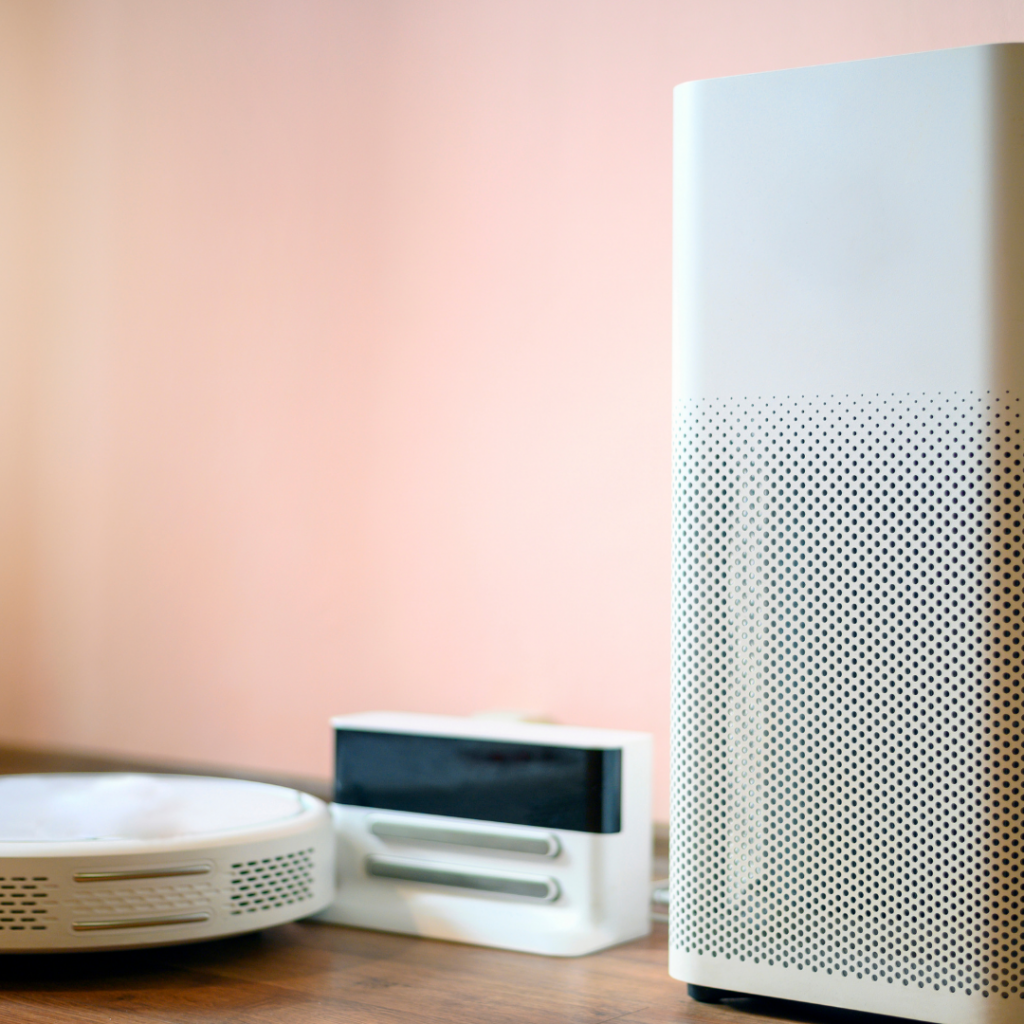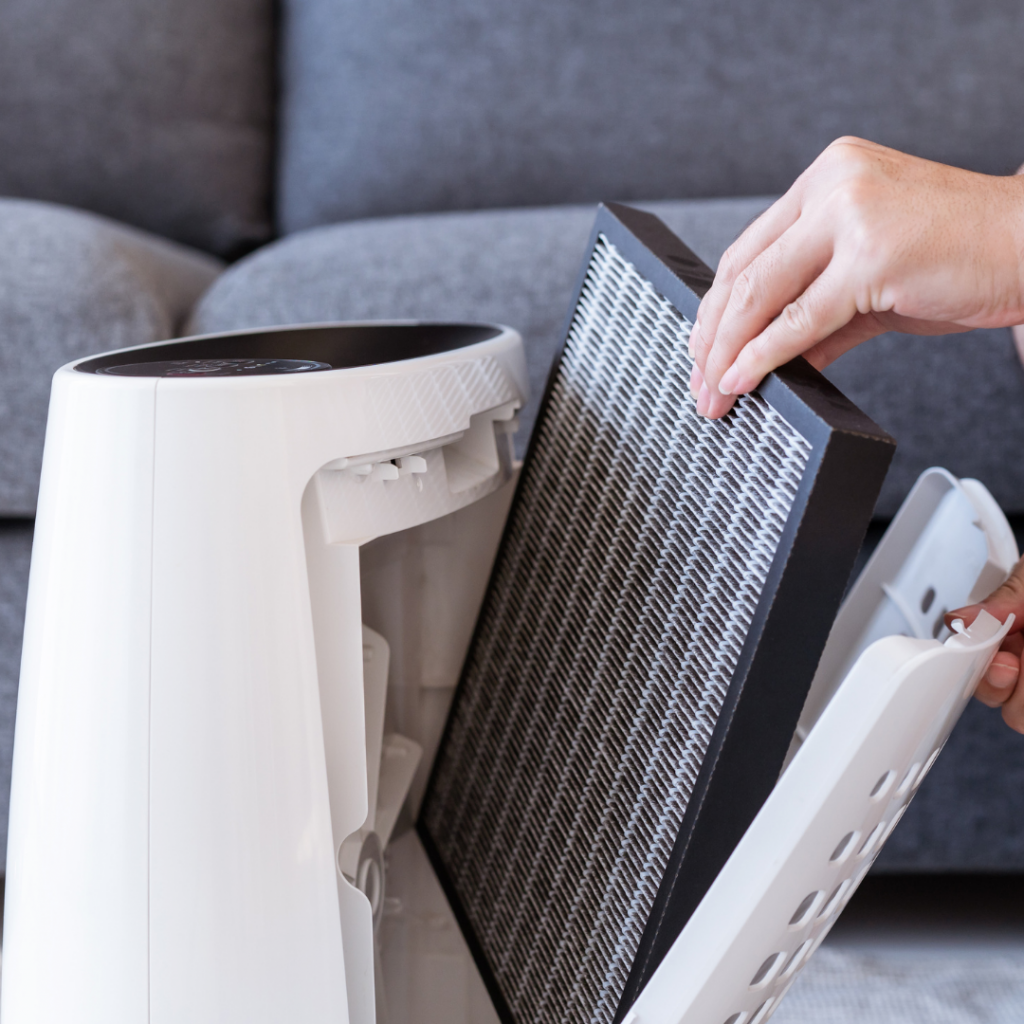Since the start of the Covid-19 pandemic, there has been a lot of discussion about the pros and cons of having an air purifier in your home. Some articles claim the benefits of air purifiers to reduce the presence of particles that cause Covid. Whether or not that is true is debatable, but toxins enter our environment from everywhere. They come through the food we cook, the cleaning products we use, even the furniture we sit on. Having an air purifier in the rooms where you spend the most time, like a bedroom or living room, can be a good investment, particularly if you or someone in your household suffers from allergies.
No air cleaner or filter can remove all the pollutants in your home, but they can help minimize their presence. An air purifier can remove allergens only while they’re floating in the air. Larger, heavier allergens, such as mites, mold, and pollen, settle to the ground quickly so air purifiers can’t capture them in time.
We often discuss poor outdoor air quality, but the same goes for your indoor air quality. Pollutants come in all forms – tobacco smoke, burning wood, cooking, off-gassing from cleaning products and building materials, dust mites, mold, pet dander, etc. All of these contribute to poor indoor air quality which over time can have ill effects on your body.
Four Things to Consider When Purchasing an Air Purifier
- Cost of replacement filters – You should replace filters every six to 12 months for pleated filters, and every three months for activated carbon filters. Most units have an indicator light that will let you know when it’s time to change or clean the filter. Replacement costs vary widely from $20-$200 so research this before purchasing.
- Certifications – Look for the Energy Star logo. Air purifiers need to run 24/7 in order to be effective. Energy Star certified air purifiers are 40 percent more energy efficient. You may also find an AHAM Verified seal on some air purifiers. This stands for Association of Home Appliance Manufacturers. This is a voluntary certification program that many air purifier manufacturers undergo to give consumers more information on their product. This seal typically provides clean air delivery rates (CADRs) and room size guidelines.
- Room size – Make sure you know the square footage of the room where you want to place your air purifier. Consider sizing up. A model that is suitable for a large room (350 square feet or larger) will work well at lower (quieter) speeds and will also help with energy efficiency.
- Noise – You want your air purifier to always be running, so you need it to be as quiet as possible. Look at the packaging or the manufacturer website to see how many decibels the model operates at. For reference, your refrigerator runs at roughly 50 decibels.
Three Ways to Get the Most Out of Your Air Purifier
- Replace your filters regularly! This is key. You defeat the purpose of having an air purifier if you never replace the filter. Keep them clean (some can be vacuumed) or replace every six to 12 months.
- Position it effectively – If you can only have one unit, place it in the room where you spend the most time. This is typically a bedroom or living room. Make sure nothing can obstruct the airflow, like curtains.
- Adjust the speed – Run the unit on the high-speed setting when you’re not in the room and turn it down to low when you’re in the room. This is where sizing up on your air purifier comes in handy. You can run it on a low speed consistently and still have it work effectively.
Other Ways to Improve Your Improve Your Indoor Air Quality
- Vacuum regularly. Air purifiers can’t remove larger allergens like dust mites and pet hair. Use a vacuum with a HEPA-certified filtration.
- Always use your exhaust fan in the kitchen and bathrooms.
- Don’t smoke indoors. This also includes burning candles and wood fires, which release pollutants into the air.
- Ventilate as much as possible. Open your windows on a nice day to let clean, dry outdoor air in. If you’re not able to do this, run your air conditioner with a clean air filter.
- Reduce your use of chemical-heavy cleaning products. Store paint, glues and insecticides somewhere other than your main living quarters.
For more information on air purifiers, mold in your home, or water intrusion issues, give us a call.

